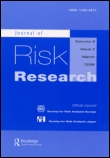
JOURNAL OF RISK RESEARCH
Scope & Guideline
Elevating Understanding of Risk Through Quality Research
Introduction
Aims and Scopes
- Risk Perception and Communication:
The journal emphasizes understanding how individuals and communities perceive risks, including the psychological, social, and cultural factors that influence these perceptions. It explores effective communication strategies for conveying risk information to various audiences. - Crisis and Disaster Management:
A significant focus is placed on the management of risks associated with crises and disasters, including public health emergencies, natural disasters, and technological accidents. The journal publishes research on preparedness, response, and recovery strategies. - Policy and Governance:
The journal examines the role of policies and governance frameworks in managing risks, addressing regulatory approaches, stakeholder engagement, and institutional trust in risk management processes. - Technological and Environmental Risks:
Research on technological risks, such as those associated with artificial intelligence, biotechnology, and nuclear energy, is a core area. The journal also addresses environmental risks related to climate change and resource management. - Health Risks and Behavioral Responses:
The journal explores health-related risks, particularly in the context of public health crises like COVID-19. It investigates behavioral responses to health risks and the effectiveness of interventions.
Trending and Emerging
- Intersectionality in Risk:
Emerging research explores how intersecting social identities (e.g., race, gender, socioeconomic status) affect risk perceptions and experiences. This theme is crucial in understanding vulnerabilities and tailoring risk communication strategies. - Digital Risk Communication:
With the rise of social media and digital platforms, there is an increasing emphasis on how digital communication shapes public perceptions of risk. Studies are delving into the impact of misinformation and the role of online discourse in risk management. - Climate Change and Environmental Risks:
Research on climate change risks is gaining prominence, focusing on adaptation, resilience, and the psychological impacts of environmental changes. The journal is responding to the urgent need for insights into sustainability and risk governance. - Health Communication during Crises:
The COVID-19 pandemic has catalyzed a surge in research on health communication strategies and public health risk perceptions. This trend includes examining vaccine hesitancy, misinformation, and the role of trust in health messaging. - Technological Risks and Ethics:
As technology evolves, there is a growing focus on the ethical implications of technological risks, particularly in AI and biotechnology. This includes exploring public trust and regulatory frameworks.
Declining or Waning
- Traditional Risk Assessment Models:
There seems to be a waning interest in conventional risk assessment methods that do not incorporate behavioral and contextual factors. The trend is shifting towards more integrative approaches that account for complexity and uncertainty. - Focus on Historical Case Studies:
Research that primarily relies on historical case studies without applying contemporary theoretical frameworks or innovative methodologies appears to be less frequent. The journal is moving towards more dynamic and forward-looking analyses. - Narrowly Defined Risk Domains:
There is a noticeable decline in publications focused solely on narrowly defined risk domains (e.g., specific industries or types of risks) without interdisciplinary connections. The journal is increasingly favoring interdisciplinary research that encompasses broader societal implications.
Similar Journals

International Journal of Disaster Risk Science
Transforming knowledge into action in disaster risk management.The International Journal of Disaster Risk Science, with ISSN 2095-0055 and E-ISSN 2192-6395, is a premier, peer-reviewed open-access journal published by Springer. Since its inception in 2011, the journal has been dedicated to advancing knowledge and practice in the field of disaster risk science, facilitating critical discussions around disaster preparedness, response, and resilience across various regions of the globe. This journal holds impressive rankings, including Q1 in Geography, Planning and Development, and Q1 in Safety Research for 2023, confirming its high impact within the academic community. With converged publication years from 2010 to 2024 and being ranked in the top 10% in multiple categories, it serves as an essential resource for researchers, professionals, and students alike. As an open-access journal, it ensures that cutting-edge research is freely available, promoting wider dissemination and engagement with topical issues in disaster risk management.

Journal of Agricultural Safety and Health
Transforming agricultural safety through research and knowledge.Journal of Agricultural Safety and Health is a premier publication dedicated to advancing the knowledge and practice of safety and health in agricultural environments. Published by the American Society of Agricultural and Biological Engineers, this journal has been a vital resource since its inception in 1997, providing a platform for research that addresses critical issues related to occupational safety, risk management, and public health in the agricultural sector. With an ISSN of 1074-7583 and an E-ISSN of 1943-7846, the journal is indexed in various databases and achieves recognition in the academic community, notably being categorized in Q3 for Agricultural and Biological Sciences and Safety, Risk, Reliability and Quality, and Q4 for Public Health and Environmental Health in the latest rankings. Researchers, practitioners, and students can access valuable insights and findings that not only reflect the current state of agricultural safety but also guide future improvements in health standards and practices. As the field continues to evolve, the Journal of Agricultural Safety and Health remains committed to its mission of promoting safety and health in agricultural work, ensuring that the community thrives in a safe and productive environment.
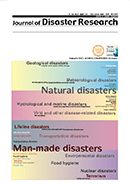
Journal of Disaster Research
Innovating strategies to mitigate disaster impacts worldwide.Journal of Disaster Research, published by FUJI TECHNOLOGY PRESS LTD, is a prominent Open Access journal that has been disseminating critical research on disaster management since its inception in 2007. Focusing on the interrelated fields of engineering and safety, the journal aims to advance knowledge and policy in disaster risk reduction, response, and resilience, making it an essential resource for researchers, practitioners, and policymakers alike. With an ISSN of 1881-2473 and E-ISSN 1883-8030, the journal covers a wide range of topics related to disaster studies, ensuring the dissemination of innovative solutions and diverse perspectives. Situated in Japan, the journal has been ranked Q3 in both Engineering (Miscellaneous) and Safety, Risk, Reliability, and Quality categories, showcasing its commitment to quality scholarship. As it converges its research contributions from 2006 to 2024, the Journal of Disaster Research continues to serve as a vital platform for advancing the science and practice of disaster research, thereby enhancing societal resilience against crises.
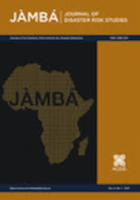
Jamba-Journal of Disaster Risk Studies
Bridging Theory and Practice in Disaster Management.Jamba-Journal of Disaster Risk Studies, published by AOSIS, serves as a vital resource in the fields of management, monitoring, policy, law, and safety research, with an ISSN of 1996-1421 and an E-ISSN of 2072-845X. Since its establishment as an Open Access journal in 2006, Jamba has dedicated itself to disseminating high-quality research that informs and enhances disaster risk management practices, particularly within the South African context and beyond. With a robust Impact Factor and acknowledgement in the Q2 and Q3 quartiles across critical categories in 2023, Jamba ranks favorably in Scopus, notably Rank #50/109 in Social Sciences (Safety Research) and Rank #218/399 in Environmental Science (Management, Monitoring, Policy and Law). The journal's convergence over the years—from 2013 to 2024—signals its commitment to adapting contemporary challenges in disaster risk studies. Scholars and practitioners are encouraged to explore Jamba as a go-to platform for innovative insights and collaborative discussions that impact policy-making and practical applications in disaster risk reduction.
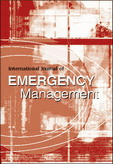
International Journal of Emergency Management
Advancing global strategies for effective emergency management.International Journal of Emergency Management is a reputable publication within the fields of emergency medicine and strategic management, published by InderScience Enterprises Ltd. With its ISSN 1471-4825 and E-ISSN 1741-5071, this journal has been a crucial platform for scholarly research since its inception in 2003. The journal aims to disseminate high-quality, peer-reviewed articles that address critical issues related to emergency management, including but not limited to disaster preparedness, response strategies, recovery methods, and risk assessment. Despite being categorized in Q4 of both emergency medicine and strategy and management in 2023, the journal serves as an essential resource for researchers, professionals, and students looking to further explore the evolving dynamics of emergency management. It leverages its global presence, with its headquarters located in the United Kingdom, thus attracting a diverse array of contributions addressing international and interdisciplinary perspectives. The journal fosters an environment where innovative ideas can flourish, ultimately contributing towards enhancing global emergency management practices.
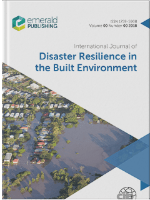
International Journal of Disaster Resilience in the Built Environment
Enhancing safety through innovative practices.International Journal of Disaster Resilience in the Built Environment is a leading peer-reviewed journal published by Emerald Group Publishing Ltd, focusing on the crucial intersection of disaster resilience and the built environment. Established in 2010, this journal serves as an essential platform for researchers, professionals, and students engaged in the fields of Building and Construction, as well as Safety, Risk, Reliability and Quality, maintaining a respectable Q3 ranking in both categories as of 2023. With a commitment to enhancing global knowledge on resilient construction practices, the journal examines innovative strategies to mitigate risk and enhance safety in built structures. Despite its robust academic reputation, it currently operates without an open access model, emphasizing its curated approach to high-quality scholarship. The publication aims to foster interdisciplinary collaboration and advance the development of sustainable practices within the context of disaster risk reduction, making it a vital resource for anyone dedicated to improving resilience in the built environment.
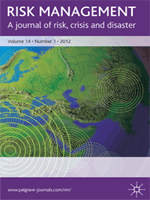
Risk Management-An International Journal
Transforming Risk Into OpportunityRisk Management - An International Journal is a premier publication dedicated to advancing the understanding and methodologies of risk management across various sectors, including business, finance, and economics. Published by Palgrave Macmillan Ltd in the United Kingdom, this journal not only maintains a robust presence in the scholarly community but also ranks in the Q2 category for Business and International Management and Finance, as well as Q3 for Economics and Econometrics and Strategy and Management. With its diverse scope and commitment to high-quality research, the journal provides essential insights for academics, practitioners, and students alike, helping to shape the future of risk management practices globally. While not an open-access journal, its rigorous peer-review process ensures that only the most impactful and relevant studies are featured. Covering topics that converge the years from 2006 to 2024, Risk Management represents a vital resource for those looking to deepen their knowledge in this critical field.
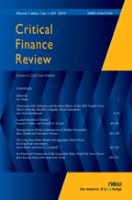
Critical Finance Review
Fostering collaboration for groundbreaking financial theories.Critical Finance Review is a premier academic journal dedicated to advancing the field of finance through the publication of high-quality research that spans various dimensions of the discipline. Published by NOW PUBLISHERS INC, this journal has quickly established itself as a leading source of innovative finance scholarship, achieving a notable Q1 classification in the 2023 finance category. Operating under a rigorous peer-review process, the journal ensures the academic integrity and relevance of its content, which attracts contributions from both emerging and established scholars. With an ISSN of 2164-5744 and E-ISSN 2164-5760, it is accessible to a global audience, though it operates under traditional access models. The journal welcomes a diverse range of topics including, but not limited to, risk management, financial markets, and quantitative finance, making it an essential resource for researchers, professionals, and students who are keen to explore the complexities of financial systems and develop new insights in the ever-evolving landscape of finance. Based in the United States, Critical Finance Review holds a significant position within the academic community, fostering a collaborative environment that encourages innovative thinking and practical applications of financial theories.
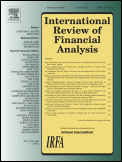
International Review of Financial Analysis
Empowering scholars to shape the future of finance.The International Review of Financial Analysis, published by Elsevier Science Inc, is a premier journal dedicated to advancing the fields of finance and economics. With an impressive impact factor and ranked in the top quartile (Q1) of both Economics and Econometrics and Finance categories, this journal is recognized for its high-quality research and significant contributions to the discipline. Since its inception in 1992, it has provided a platform for scholars to present innovative theories and empirical studies that address critical financial issues around the globe, making it a vital resource for researchers, professionals, and students alike. Although it does not offer open access, the journal actively engages with contemporary debates in financial analysis, ultimately empowering its readership to contribute to and benefit from the ongoing discourse. With its convergence of financial research and analytical methodologies through 2024, the International Review of Financial Analysis remains a cornerstone in the pursuit of knowledge within the ever-evolving landscape of finance.
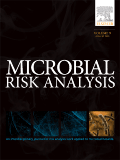
Microbial Risk Analysis
Exploring the Nexus of Epidemiology and MicrobiologyMicrobial Risk Analysis, published by Elsevier, is a pivotal academic journal specializing in the intersection of epidemiology, infectious diseases, and medical microbiology. With an ISSN of 2352-3522 and an E-ISSN of 2352-3530, this journal has been contributing to the field since its inception in 2016 and continues to invite groundbreaking research as it converges through 2024. With a respectable impact factor, Microbial Risk Analysis holds a Q3 designation in key categories, showcasing its credibility with ranks such as #48 in Epidemiology and #124 in Infectious Diseases according to Scopus. The journal serves as an essential platform for researchers, professionals, and students alike, aiming to enhance understanding of microbial risks and their public health implications. Although it operates under a subscription model, its contents remain accessible to a broad range of interdisciplinary scholars dedicated to advancing microbial research. For those at the forefront of epidemiological and infectious disease studies, Microbial Risk Analysis represents a crucial resource for disseminating knowledge and fostering collaboration.